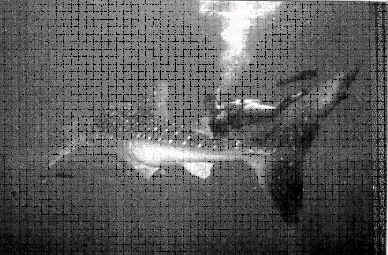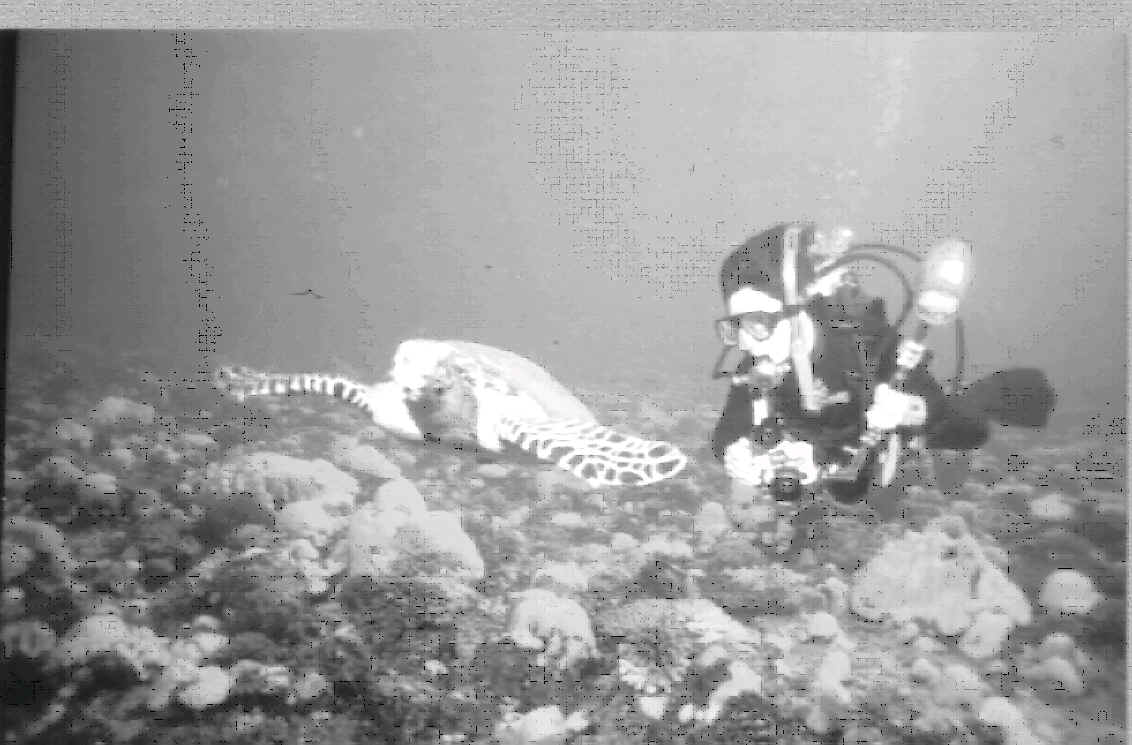
THESMANEWS
Present Issue
Past Issues
Journals
Present Issue
Past Issues
Letters to the Editor
![]()
![]()
This site is supported by Health ONE
Materia-non-Medica- "Underwater Photography"
"Getting a marine creature to get into the correct pose in the desired background involves knowing the subject's behaviour, stalking it and finally tripping the camera shutter at the precise moment."
The underwater world is an exciting one, full of colour and interesting marine life. That is what fuels my passion for scuba diving and underwater photography. How does one share the feeling of wonder with those who have not come for the dive? The answer is obvious – bring underwater images back to dry land.
Be a competent diver
Before contemplating bringing the simplest of cameras on a dive, one must be competent in one’s diving skills. It is hard to imagine a photographer trying to get a decent picture while bouncing up and down the water column, scaring the wits out of marine creatures, or someone constantly worrying about his diving equipment rather than concentrating on obtaining a good photograph. Honing one’s diving skills prior to taking pictures underwater is definitely a plus point.
Be focused
Unlike land photography, where the luxury of spending long periods trying to line up a decent shot exists, dive safety considerations dictate a more focused approach. In underwater photography, it pays to have an idea of the subject one wants to photograph. Only then, can one sit down to prepare the camera system that needs to be brought on the dive – submersible or housed camera system, single or twin strobes (underwater flash guns) and so on. Once a dive has commenced, one is stuck with what one has set up. If an interesting subject that does not fit one’s camera configuration swims by – too bad! Care has to be taken to correctly load a roll of film and test the whole set-up to ensure it works. After all that, one can finally begin one’s photographic endeavours.
Be patient and meticulous
Equipment and diving skills aside, to be an underwater photographer demands a certain personality. Firstly, patience is an absolute virtue. Getting a marine creature to get into the correct pose in the desired background involves knowing the subject’s behaviour, stalking it and finally tripping the camera shutter at the precise moment. I have seen divers spend almost the whole dive just covering one subject.
Then there is meticulousness. Underwater photographic systems, which are subjected to harsher environmental conditions than land based ones, need care. This means taking time to ensure the whole system is waterproof. All too often, I have seen divers hurriedly put together camera systems at a dive site, submerge into the depths and discover, to their horror, bubbles emanating from their cameras. Electronic systems and seawater do not get on well together.
After the dive, there is more maintenance work to be done. Namely, the camera system has to be soaked in fresh water, otherwise it will be salt-encrusted and will require expensive repair. Care to avoid wet hair or a wet suit dripping salt water into the insides of one’s camera is a must. That is why male underwater photographers work on their equipment in swimming trunks and with a towel wrapped around their heads.
Dare to be criticised
A sense of humour and willingness to be criticised is essential. Many times, I returned from some remote part of the world, after having spent a considerable sum of money, thoroughly convinced I had taken the perfect picture, only to be told that the same creature could be photographed more cheaply in Malaysia and that my photograph was technically flawed. That is part of the learning curve on which one improves.
Persistence in refining one’s techniques is the only way to improve. Underwater photographers are ever willing to display their work, which makes them an amiable and helpful bunch of people to be around with. Hopefully, from slide-shows and discussions, common mistakes are rectified and innovative techniques are explored.
The equipment
The need for a reliable and well-maintained SCUBA unit is obvious but when it comes to photographic equipment, things get slightly more complicated. There are two main systems. One is the dedicated submersible camera of which the Motomarine series and the Nikonos series are the most common and established makes. Both are range-finder type cameras, which means one has to be able to estimate distances well. Then there is the housed system – a land camera with auto-focus capability (usually the Nikon series) sealed in a watertight container made of either marine grade aluminium, high impact plastic or lexan. Watertight underwater flash units, called strobes, are an essential part of the camera system because the colours of the spectrum are absorbed at depth, beginning with red, orange and so on. The prices of the camera systems vary with the sophistication of the set-up. In Singapore, it is possible to get an entry-level system for about $1200. For the really serious photographers, systems costing as much as $8000 or more have been put at risk to bring back "that magical undersea image".
So what drives my obsession for underwater photography? Deep down, I am an optimist. Sometime in the future, in one of my many dives, there will be this perfect underwater scene that I will finally capture. In the meanwhile, there will always be a better shot!
DR VAN WENG KOON
 |
 |